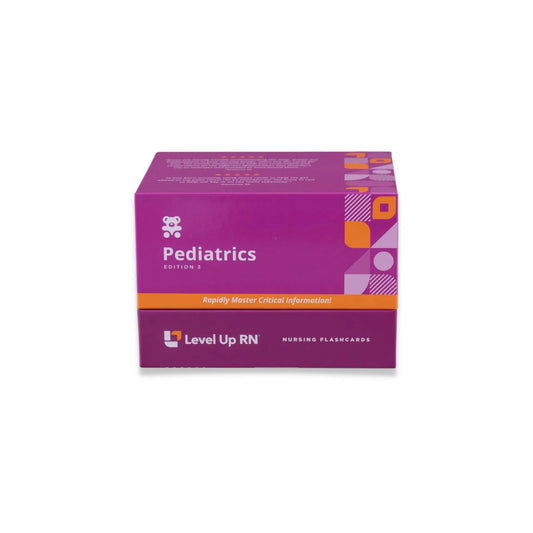Peds, part 29: Cardiovascular Disorders - Thalassemia, Hemophilia, Epistaxis
Updated: Cathy ParkesThalassemia and hemophilia, including the signs/symptoms, labs, treatment, and family teaching for patients with these disorders. Epistaxis, including causes, treatment, and family teaching for patients with epistaxis.
Full Transcript: Peds, part 29: Cardiovascular Disorders - Thalassemia, Hemophilia, Epistaxis
Full Transcript: Peds, part 29: Cardiovascular Disorders - Thalassemia, Hemophilia, Epistaxis
Hi. I'm Cathy with Level Up RN. In this video, I'm going to wrap up my coverage of pediatric cardiovascular disorders. Specifically, I will be talking about thalassemia as well as hemophilia and epistaxis. At the end of the video, I'm going to give you guys a little quiz to test your knowledge of some of the key points I'll be covering in this video, so definitely stay tuned for that. And if you are following along with our Level Up RN pediatric nursing flashcards, pull those out, and let's get started.
First up, let's briefly talk about thalassemia, which is a group of genetic disorders characterized by defective hemoglobin formation and anemia. Signs and symptoms include pallor, jaundice, decreased appetite and growth rates, an enlarged liver as well as an enlarged spleen, and deformed facial bones. Diagnosis can be done using a CBC, so complete blood count, as well as genetic testing. And treatment includes frequent blood transfusions, which, because the child will be getting these transfusions frequently and regularly, that causes the buildup of iron in the body, which necessitates something called chelation therapy to decrease those iron levels.
Next up we have hemophilia, which is a severe inherited hemorrhagic disorder. This is an X-linked recessive disorder that causes a deficiency in clotting factors. So this is not platelets. It's clotting factors. So hemophilia A results in a deficiency of factor eight, and hemophilia B results in a deficiency in factor nine. So A and eight sound very similar, so that's how I know those two go together. In terms of signs and symptoms, hemophilia will cause excess bleeding and bruising, as well as joint pain and swelling and decreased range of motion. Lab work will show an elevation in aPTT and a decrease in factor eight or nine, depending on what type of hemophilia is present. In addition, it's important to note that platelet count and PT will not be affected. Okay? So definitely remember that. In terms of treatment, we're going to do factor replacement, so factor eight or nine, depending on the type of hemophilia. And then we want to provide some important family teaching. So we want to prevent bleeding in the child, so the child should not take NSAIDs or aspirin, and we should avoid IM injections whenever possible. In addition, we want our child to engage in physical therapy in order to maintain range of motion. However, they should not engage in contact sports. And then for acute bleeding, we want to remember the RICE mnemonic. So that's R-I-C-E, which includes rest, ice, compression, and elevation.
Lastly, let's talk about epistaxis, which is a fancy name for a nosebleed. This can be caused by trauma, a bleeding disorder, dry air, allergies, as well as certain medications. So if a child has a nosebleed, we want to lean the child's head forward and not back, because we want to avoid having them swallow the blood. We want to maintain pressure with our thumb and finger on the soft part of the nose, and maintain pressure for ten minutes. We can also apply an ice pack to the bridge of the nose. For persistent bleeding, we can use packing with epinephrine, or the provider can cauterize the bleed. In terms of family teaching, we want to advise our families to keep the child's nose lubricated and use a cool mist humidifier in the room. We should also advise the child to avoid blowing their nose forcefully.
All right, it's time for a quiz. I've got three questions for you. First question. Hemophilia A is caused by a deficiency in blank. The answer is factor eight. Question number two. With hemophilia, platelet count will be decreased. True or false? The answer is false. Platelet count should not be affected. Question number three. How should your patient with epistaxis be positioned? The answer is, they should be positioned such that their head is bent forward. Okay, that's it for this video. I hope it was helpful. When I come back, I will start covering nervous system disorders in the pediatric population. Thank you so much for watching.


